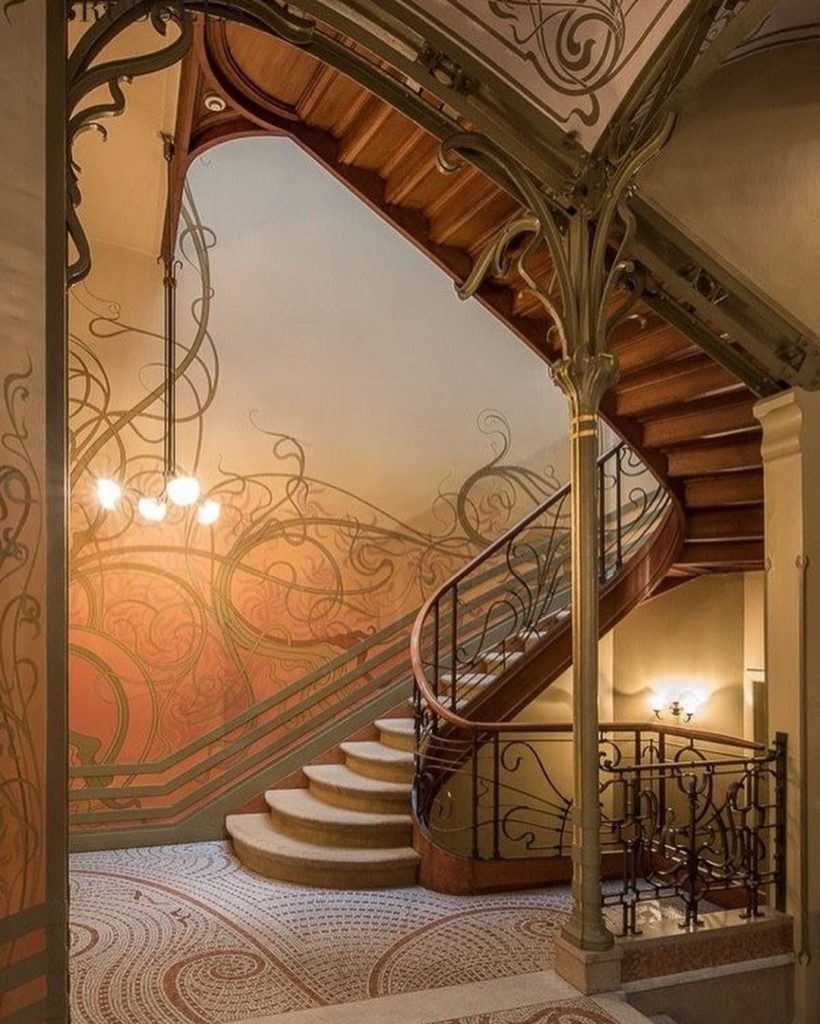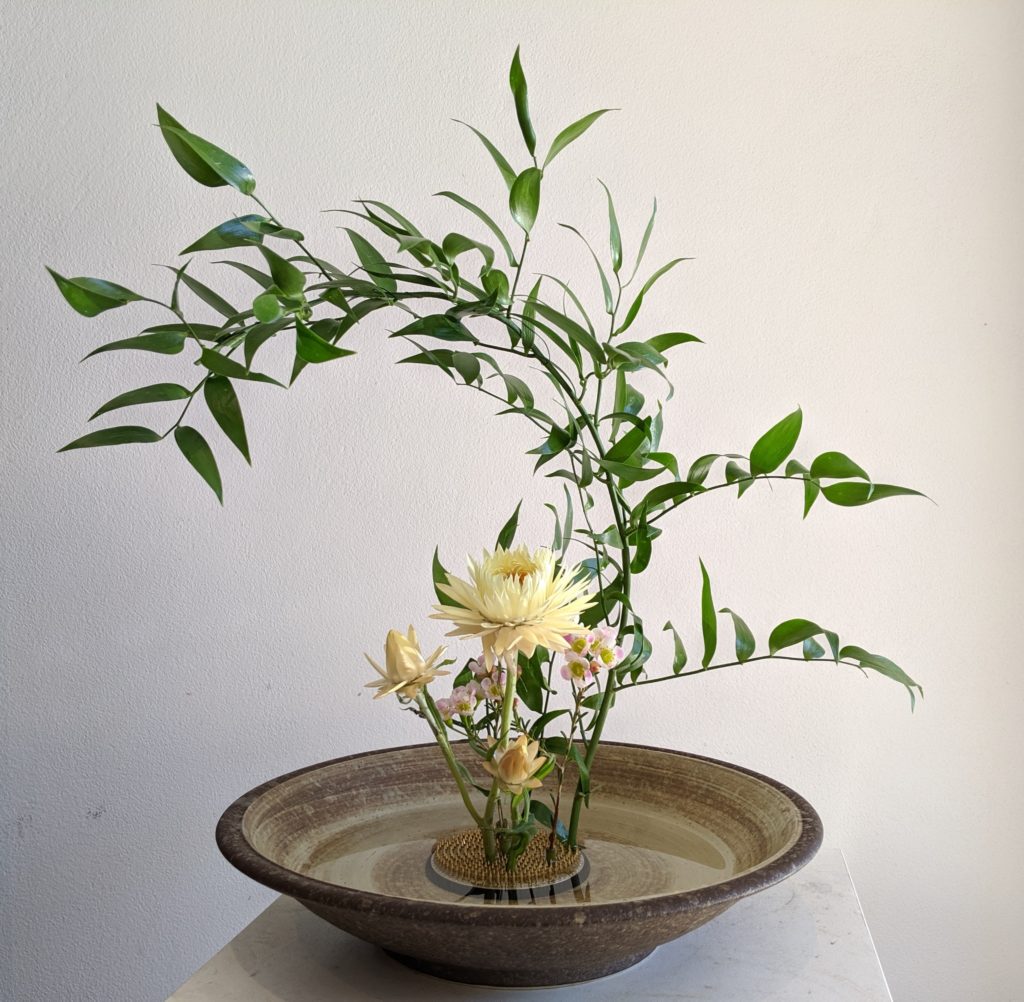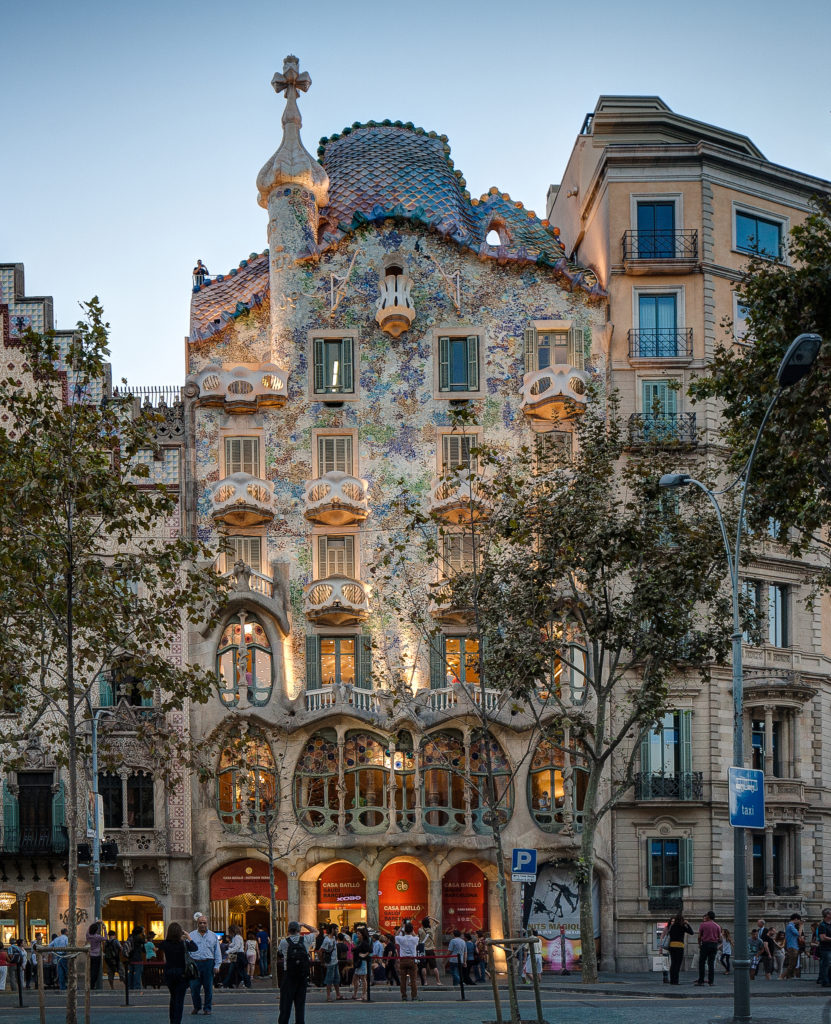Hi ArchiHacks fam, this article is a part of the series emphasizing the multiple styles in architecture! A few weeks back, we took a look at Art Deco, but we will be dissecting Art Nouveau today!
Before we get started, let’s look at the diagram of the timelines below of the 19th and 20th-century architectural styles, ideologies, designers, and more to give you a better footing of our series. As you can tell, there’s a lot, and we will do our best to give you digestible information. It’s important to note, there’s no particular order we are writing, but every article will have this diagram for you to reference!
The Origin
Art Nouveau, or “New Art,” was an innovative and ornamental architecture style that became popular from about 1890 until roughly the start of WW1 throughout Europe and the United States. Up to this time period, industrialization and mass production of materials resulted in buildings being cheaply made and incited artists and designers to return to craftsmanship. This group of artists and designers believed that society should incorporate art back into everyday life too. As a result, Art Nouveau manifested itself in architecture with decorative elements and intricate details!
Ironically, the high cost of design and construction made Art Nouveau short-lived in architecture by the beginning of World War I (1914). The more streamlined aesthetic of modernist structures that were far cheaper to produce became more popular. Eventually, this simpler industrial design, along with Art Nouveau, morphed into Art Deco, which we covered in one of our previous articles.
Where Did The Name Come From?
In Belgium, Art Nouveau was coined by the periodical L’Art Moderne to describe the work of the artist group Les Vingt, and in Paris by Siegfried Bing, who named his gallery L’Art Nouveau. Les Vingt, also known as The Society of the Twenty, was a group of Belgian painters that used simplified forms, heavy outlines, subjective use of colors, and spiritual content. One member, in particular, Henry Van de Velde, eventually transformed their own symbolist style adding fuel to the Art Nouveau movement.
Unironically, the style was called differently in other countries, like Jugendstil in Germany, Sezessionstil in Austria, Stile Floreale in Italy, and Modernismo in Spain. Don’t worry! Although there are regional differences in names and characteristics for this style, Art Nouveau can still boil down to a handful of traits and ideologies that categorize an Art Nouveau building.
Notable Art Nouveau Buildings and Designers
- Victor Horta
- Hector Guimard
- Antoni Gaudi
- Charles Rennie Mackintosh
- Henry van de Velde
- Eliel Saarinen
- Otto Wagner
- Joseph Maria Olbrich
- Casa Batlló, Barcelona – Antoni Gaudi
- Majolikahaus, Vienne – Otto Wagner
- Glasgow School of Art, Scotland – Charles Rennie Mackintosh
- The Secession Building, Vienna – Joseph Maria Olbrich
- Hotel Tassel, Brussels – Victor Horta
- Jugendstilsenteret – Hagbarth Martin Schytte-Berg
- Prague, Czech Republic
- Budapest, Hungary
- Glasgow, Scotland
- Paris, France
- Riga, Latvia
- Brussels, Belgium
- Barcelona, Spain
- Buenos Aires, Argentina
- Chicago, U.S.
- Mexico City, Mexico
1. Intricate Curvilinear Patterns + Emphasis on Lines
Buildings were full of curved and sinuous lines with ornaments inspired by organic shapes from nature. This organic concept is quite common in Art Nouveau buildings, and often they have asymmetrical lines and structures, like arches, which, in essence, could be reinforcing an organic interpretation and participation of the building.
The most telling and notable curvilinear element in an Art Nouveau building is the application of whiplash curves. The whiplash lines were frequently interlaced and combined with twists and scrolls to inspire a poetic and romantic association. Femininity and romanticism were represented by the lines of long curling hair intertwined with flowers, which is not a surprise since this period’s art emphasized feminine sensuality.
It’s important to note that regional differences could affect this trait, so be on the lookout for strong lines in its design, specifically, vertical lines and curvilinear patterns.
2. Plant and Nature Inspired Motifs
As I mentioned before, designers wanted to counteract the rapid industrialization and break away from historicism and neoclassicism. However, how do you find inspiration that didn’t stem from previous styles? Art Nouveau designers sought inspiration from nature that previous styles didn’t utilize to a high degree when comparing the art nouveau works. This also reconciled a relationship with nature again.
Hence, plant-inspired motifs, such as vine tendrils, flowers, buds, even twigs, were often developed in some elements in a building. Other nature-inspired motifs included insects, birds, wings, etc., that further complimented romanticism and femininity were present in Art Nouveau buildings.
3. Colorful
To combat the grays of industrialization, Art Nouveau designers replicated a colorful palette that an individual would find on their leisurely stroll outside! These colors are typically found in various scenarios in tile work, mosaics, and stained glass. One of the most notable projects globally, and one of my favorites, that utilized stained glass in Art Nouveau style is the La Sagrada Familia in Barcelona, Spain, designed by Antoni Gaudi.

When possible, I’d highly recommend taking a visit to this beautiful piece of architecture that took my breath away! The structural design of the basilica itself resembles large trees, and the combination of beautiful stained glass truly takes one away into an enchanting reverie of an unparalleled world. This moment is quite phenomenal when you think about how the basilica is situated on a few blocks of the busy city of Barcelona.
4. Implied Movement
The intricate curvilinear patterns and organic structures gave a building a sense of implied movement as your eyes followed the velvety lines. It was also difficult to discern whether an element was ornamental or a part of the building’s structure, which visually confused viewers as they passed by. The common design element, whiplash curves, also represented the idea of dynamism and movement.
5. Omnipresence
As nature is all around us, this design style was omnipresent in architecture, interior design, art, graphic design, metalwork, etc. Designers used every chance to add these finer details to create a compelling piece of craftsmanship.
So, if you continue to see curvilinear elements and nature-inspired motifs with every turn inside a building. It’s most likely an Art Nouveau piece of architecture!

Being one of the historical roots of modern architecture, Art Nouveau has various definitions and traits that complicate its exact definition. However, these 5 characteristics should help you discern them if you pass by a few buildings. To some people, Art Nouveau may seem outdated and irrelevant. However, they are quietly gaining popularity as they are revived in multi-media industry in the form of steampunk, and parametric design methods are enabling financially viable possibilities of elaborate ornamentation in architecture for real this time! In addition, with the ever growing interest in sustainability and awareness of natural forces, a reincarnation of Art Nouveau in prime might just be around the corner. How do you feel about Art Nouveau? As always, let us know in the comments below.
Well, that’s all we have for you today, and if you’ve made it this far, you deserve a cookie



I have actually been looking for this all this
moment. Grateful I have found it right here. Thank you
a lot!